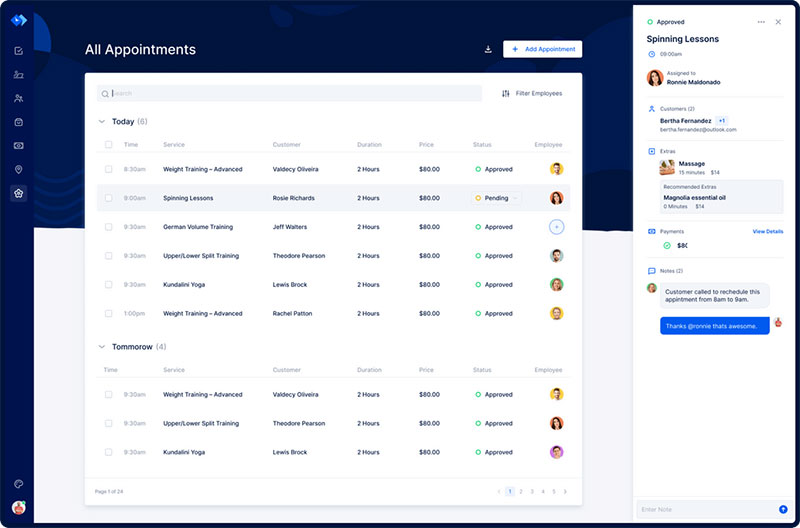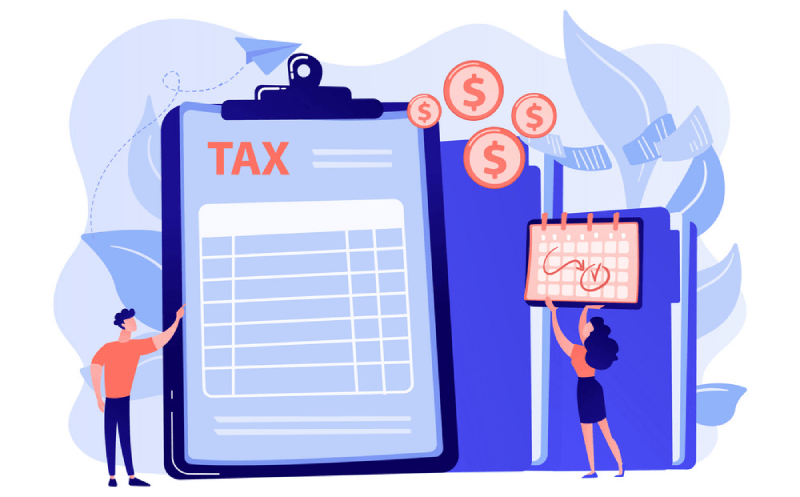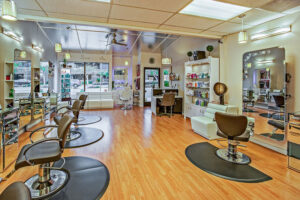Want to know how to start a barbershop? It’s not easy, we can tell you that, but it’s worth it.
Let’s dive in.
“A true entrepreneur is a doer, not a dreamer”. Even though starting a business might begin with a dream, it also requires a significant amount of planning, preparation, and hard work to succeed.
From securing funding and finding a location to hiring staff and promoting the business, there are many critical steps involved in opening a barber shop and ensuring it becomes successful.
In this article, we’ll explore the essential factors to consider when starting a barbershop, including market research, financial planning, and marketing strategies.
Whether you are a seasoned barber looking to open your own shop or a newcomer to the industry, this guide will provide valuable insights and tips to help you get started on the path to success.
Starting a Barbershop Business in 13 Easy Steps
When opening a barbershop, you need to:
- Write a business plan
- Research the market
- Decide on a budget
- Figure out funding
- Determine the legal structure of your barbershop
- Register for taxes
- Obtain a barber license
- Get the necessary business licenses and permits
- Choose a location
- Prepare essential tools and systems for managing your barbershop
- Hire the right people
- Establish your brand
- Get the word out
Write a business plan

The first step in how to start a barbershop is to write a business plan. Every successful business starts with a plan.
A business plan is the foundation of the barbershop. It is a step-by-step guide to every stage of starting, running, and growing the business.
It is like a roadmap that will guide owners to success.
More than that, a business plan is vital to get partners or funding. Investors want to be sure they will see a return on their investment.
They want to know that there is a detailed plan on how to run and grow the business that will get them their money back. The business plan will show them whether the barbershop will be successful or not.
So, creating a barbershop business plan is an important first step in starting a barbershop.
But what goes into a business plan?
An executive summary
The executive summary tells the reader why the business will have success. It should contain information such as:
- The mission statement
- The service or products offered
- Information about the leadership, the team, and the employees
- Financial information
- Growth plans if asking for financing
Company description
When writing a business plan, you need to describe your barbershop in greater detail.
Include the following information about your barbershop:
- The name (check out some pretty cool ones to get your creative juices flowing)
- Location
- Legal description
- Your (and your business partners) names
- Your competition
Market research and analysis
To succeed, you need to have full awareness of the industry and current market trends. Research the barbershop industry both at a local and national level.
Answer these questions in the market research:
- Who is the competition?
- What are their strengths?
- What do they do that works?
- Why does it work?
- Can you do it better?
- Where is the industry going?
- What are the average revenues and margins of a barbershop?
Other aspects of a business plan
Some other essentials to include are:
- The structure of the company
- A detailed explanation of the service
- Marketing and sale strategies
- Funding requests
- Financial projections
- An appendix to provide supporting documents
Tip: The business plan should highlight how you are going to compete and bring in business – if you need help, check out our comprehensive guide on how to write a sure-fire business plan for a barbershop.
Research the market

Market research and analysis are crucial steps when starting a barbershop. This involves gathering information about the local market, identifying your target customers, and analyzing your competition. Conducting market research and analysis can help you make informed decisions about the location, services, and pricing of your barbershop.
Get to know your customers
To begin, start by determining who your target customers are. Specify their age, gender, income level, and lifestyle preferences.
Why is this important?
Let’s say that through your market research and analysis, you have determined that your target customers are young professionals between the ages of 25 and 40, with a moderate to high income level, and an interest in grooming and personal style.
Based on this information, you can tailor your services to meet the specific needs of these particular customers. For example, you might offer more modern and trendy hairstyles, grooming products, and services, such as beard trimming and shaping. You might also offer services such as hair coloring, hairline enhancements, and hair treatments that cater to the haircare needs of this demographic.
Furthermore, you could design your barbershop to reflect the preferences of your target customers. So, if your target customers are young professionals, you could create a contemporary and modern atmosphere with comfortable seating, Wi-Fi, and a variety of entertainment options.
Determine market demand
Once you have a clear understanding of your target market, research the local area to determine the demand for barbershop services. This may involve gathering information on the number of existing barbershops, their services, and their pricing.
Let’s say you are considering opening a barbershop in a particular neighborhood. Before committing to a location, you should research the local area to determine the demand for barbershop services. This may involve gathering information on the number of existing barbershops, their services, and their pricing.
For example, you could visit nearby barbershops, inquire about their services, and observe the number of customers visiting them. You could also research online reviews to gauge customer satisfaction and identify any common complaints or pain points.
Additionally, you could research the prices of similar services in the area to ensure that your pricing is competitive. This can involve researching the prices of services offered by nearby barbershops, as well as similar businesses such as hair salons and spas.
Through this research, you can gain a better understanding of the local market and identify any gaps in services that you can fill. For example, you may find that there are no barbershops in the area that specialize in modern and trendy hairstyles or grooming products, creating an opportunity for your barbershop to fill that gap and stand out from the competition.
Check what your competitors are doing
Next, analyze your competition to determine their strengths and weaknesses. Consider factors such as the quality of their services, customer service, pricing, and marketing strategies. This will help you identify opportunities to differentiate your barbershop and offer unique services to attract customers.
In addition to gathering information about the local market and competition, it’s essential to research industry trends and best practices. This can help you stay up-to-date on the latest hair care techniques, equipment, and products. You can also gather insights on effective marketing strategies and customer retention techniques.
Overall, conducting thorough market research and analysis is a critical step in starting a business, especially barbershop. By understanding your target customers, local market, and competition, you can make informed decisions that will help you stand out and attract loyal customers.
Decide on a budget
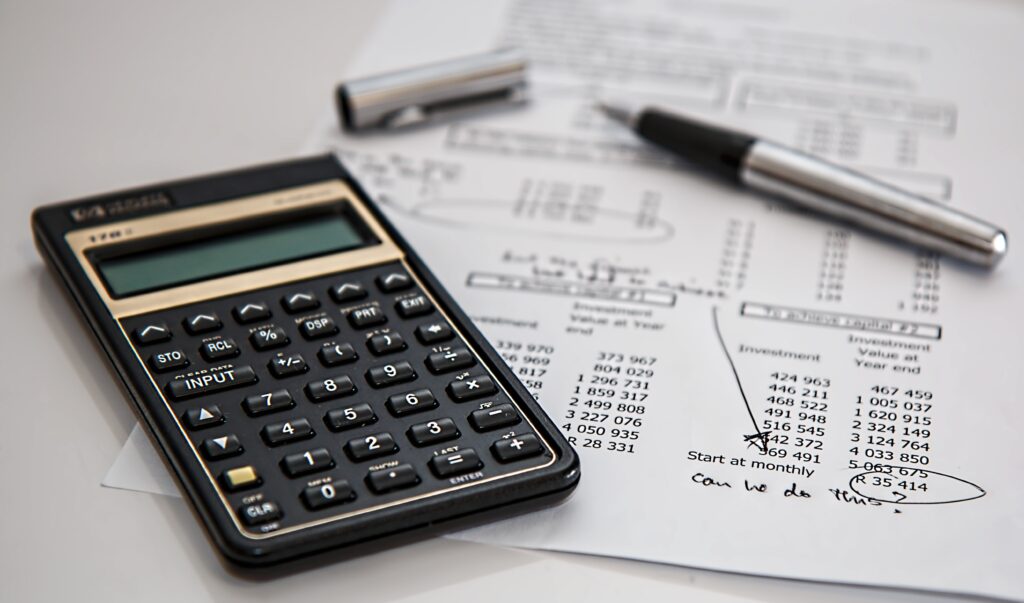
How much does it cost to open a barbershop? Truth be told, the cost of starting a barbershop depends on many factors.
Some of them are:
- business model
- price of rent
- government fees
- licenses and permits
- equipment and other supplies
The cost of starting a barbershop can range from $80,000 to $200,000 or more. This price includes the following:
- $5,000-$10,000 for barber school
- Various prices to rent, lease, or buy a barbershop
- Construction costs to renovate or build your barbershop
- $1,000+ for registration fees
- $3,000+ for license and permit fees
- $2,000+ for insurance
- $50,000+ for furniture, equipment, and supplies like chairs, scissors, clippers, brushes, etc.
- $3,000+ for marketing materials
- $1,000-$3,000 for a website
- $25,000 for franchising fees if investing in one
Figure out funding
To set up a barbershop business, you as a shop owner need a sizable amount of money.
You need money to rent, lease, or buy a shop. Then you need the equipment including barber chairs, clippers, scissors, and much more. Not to mention licenses, permissions, insurance, and registration fees.
So, you need to find a reliable financing option, or better yet a couple of them, to get things going.
You have a few options:
Your savings
Using personal savings to finance the opening of a barbershop can be an excellent option if you want to avoid taking on debt or sharing ownership with investors. However, be careful when it comes to this decision – besides rewards, this option comes with certain risks, too.
You first need to ensure you have enough money set aside for emergencies and personal expenses. Also, you need to be realistic about your expected return on investment. Stay flexible and prepare for potential setbacks – adjust your plan on the go. If you can, consult a financial advisor or business consultant to help you minimize your risks.
Debt financing
Debt financing involves borrowing money from a lender and agreeing to repay the loan with interest over time. It’s something that government programs, banks, and money lenders offer.
Equity financing
Unlike debt financing, which involves borrowing money that must be repaid with interest, equity financing involves selling ownership in the business in exchange for funding.
Grants
Grants are another funding option for barbershop owners, although they may be less common than debt or equity financing. They are typically offered by government agencies, non-profit organizations, or private foundations, and they do not need to be repaid. However, obtaining a grant can be competitive and requires a great deal of research and preparation.
Tip:
Financial backers will want to know details about the business before investing.
They will want to know the location, services offered, expenses, earnings, and more. Make sure the business plan contains this information to convince them to invest.
Determine the legal structure of your barbershop
Prior to opening a barber shop, it’s essential to determine its legal structure.
This decision will affect how you pay taxes, fund the business, and manage finances.
Common business structure types in the United States are:
Sole proprietorship
If filing as a sole proprietor, any income from the barbershop will go on your personal tax return.
C-corporation or s-corporation
A c-corporation operates as a separate entity from the business owner. This protects personal assets from any business financial obligations.
An s-corporation works in a similar way, but the owner reports the income of the barbershop on his personal tax return.
Limited Liability Company (LLC)
This is a common business structure for barbershops. An LLC entity protects shop owners from being personally liable in the event of a lawsuit against the shop.
Tip: There is an option of purchasing a barbershop franchise.
Purchasing a franchise eliminates the process of creating a business model and structure. The only thing you need to take care of is the location and funding.
Register for taxes
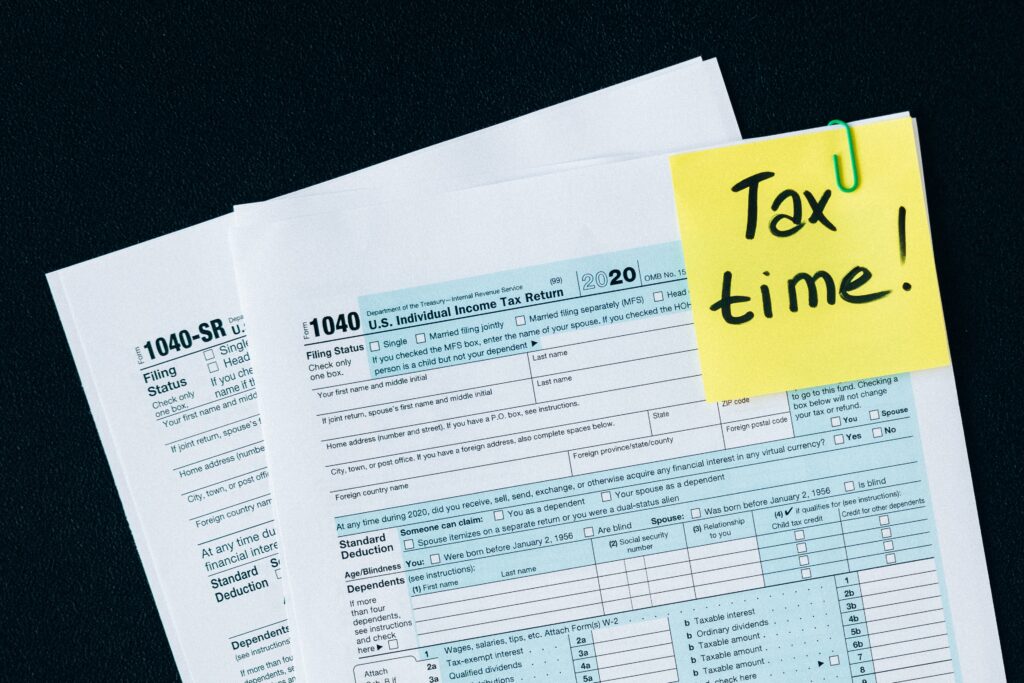
The next step when starting a barbershop is to register for taxes. In the United States, there are two types of taxes – state and federal.
To register for taxes a barbershop business needs an EIN.
EIN
An EIN is an employer identification number. It is also known as a federal tax identification number or a federal employer identification number.
It is a nine-digit number assigned to the business by the IRS for tax reasons. An EIN is necessary to receive licenses and permits, file taxes, open bank accounts, hire employees and more.
The structure of your barbershop business determines how it is taxed. Also, each state has its own taxes, so make sure to do your research first.
Tip: Businesses have to file taxes at least once a year and some have to file every quarter. Consider hiring an accountant to help you set up and file taxes the right way.
This will get the business off to a good start and prevent overpayments. Keep records of sales, invoices, product orders, and other expenses.
Obtain a barber license
Meeting the State Board requirements is how to get your barber license.
In the United States, every state has different requirements. Research what your specific state requires.
Then, contact the Barber Regulatory Authority, where you can find the needed requirements for becoming a licensed barber.
Again, this varies from state to state. But some general requirements are:
- You are a legal adult
- You have a high school diploma or higher
- You have cut hair for a substantial amount of time (at least 1,000 hours)
Next, fill out the barber license application and submit it with the required fee.
To include work experience, attach a letter from the licensed barber who trained you. Also, include your barber school degree.
A Board of Cosmetology or Barber Examiners Board sets the licensing requirements. They work with the state’s Department of Public Health to inspect and ensure that barbershops meet state regulations.
Barbershop regulations include:
- Owners have a completed Barbershop Owner application
- Proof of ownership or lease of a business location
- Proof you are a licensed barber
- Proof of a city or county business license
They will also make sure that the physical shop meets certain requirements such as:
- Hot and cold water
- Public bathrooms
- Containers for trash
- Drinking water
- Storage containers for barber tools
- Barber chairs are the required square footage apart
Get the necessary business licenses and permits
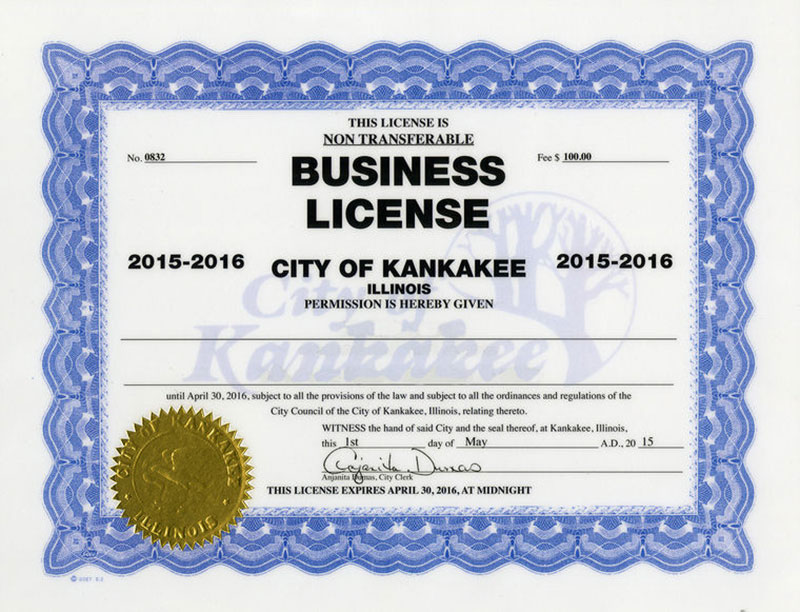
After obtaining a barber license, you now need to get a business license.
The barber license allows you to work as a barber but the business license allows you to operate a business.
Licenses and permits needed to open a barbershop are:
- State cosmetology or barbering license
- Business operating license
- Certificate of Occupancy
- Fire department permit
- Building permit
Choose a location

The next step in starting a barbershop that can make or break your business is location.
Finding the best possible location is critical to the success of your barbershop and it can pose a real challenge.
Here’s what you need to pay attention to:
Think about the target market
Who is the target customer? Make sure that the location of the barbershop is near where they work or live. You need a high concentration of your target market to ensure a steady stream of customer
Rent and lease terms
Look for a location with affordable rent and favorable lease terms, such as a long-term lease. Having the option to negotiate a rent reduction if the business does not meet certain financial goals is also great.
Easy to find
The best place for a barbershop is somewhere with a lot of foot traffic. A location in a retail area will generate walk-in customers and build brand awareness.
Keep in mind though that places in high-traffic areas cost more.
Parking
Consider the availability of parking for your customers, either in the form of on-site parking or nearby public parking.
Fits the nature of your brand
Choose a location and space with characteristics that fit the brand style. The space should adapt to your plans to create an appealing atmosphere.
This will boost brand awareness, attract customers, and increase the chance of growth.
Good condition
It is also important that the space is in good condition. All the plumbing, electricity, heating, and cooling should be reliable.
The space should be clean and well-maintained. Trust us, you don’t want to find yourself having to spend money fixing the place a day before opening your barbershop.
Safe location
Another important thing to keep in mind is how safe the neighborhood is. You don’t want to be at risk of a robbery or lose clients because they fear the neighborhood.
Competition
Consider the number of existing barbershops in the area and the services they offer. Look for a location with less competition or where you can differentiate your barbershop by offering unique services.
Meet the requirements of the state cosmetology and barbering board
The State and Barbershop Board have specific requirements for a barbershop. Know what these requirements are in your state and make sure to choose a place that complies with them.
Prepare essential tools and systems for managing your barbershop
Managing a barbershop requires more than just tools and equipment for providing services. It also requires a range of tools and systems to ensure that the business operates efficiently and effectively. Here are some essential tools and systems for managing a barbershop:
- Booking system: A scheduling and appointment booking system is essential for managing customer appointments and reducing wait times. Such a tool streamlines scheduling, facilitates calendar management, enables efficient employee management, and improves customer experience. Look for a system that allows customers to book appointments online, sends reminders, and offers useful integrations.
- Point-of-Sale (POS) system: A POS system is essential for managing transactions and tracking inventory. With a POS system, you can easily process payments quickly, track sales, and manage inventory.
- Accounting software: Accounting software is essential for managing finances and tracking expenses. This software enables you to track income and expenses, create invoices, and generate financial reports.
- Marketing tools: Marketing tools are essential for attracting new customers and retaining existing ones. Email marketing software, social media management tools, and online advertising platforms are great options for a barbershop.
- Business analytics tools: Business analytics tools are essential for tracking business performance and making data-driven decisions. Look for tools such as Google Analytics, which allows you to track website traffic and user behavior, and business intelligence tools that help you visualize and analyze data.
Get more bookings with the right tool for the job
Before technology, barbers would use a physical booking calendar to schedule appointments. There’s nothing wrong with using such a calendar – it works just fine.
However, an online booking system works ten times better.
Trafft handles your bookings, customers, and employees for you, letting you focus on managing your barbershop and growing your brand.
Trafft is the perfect barbershop software for barbers looking to streamline their booking experience both for their staff and their clients.
Save time with Trafft’s automated email and SMS notifications, confirmations, and reminders. No-shows? Not anymore!
Got your attention? Check out Trafft’s awesome features to see what you are missing.
Hire the right people
You as a barbershop owner can act as the sole barber. But to expand your barbershop, you’ll need to expand your team first.
Finding skilled barbers that have good people skills is key. Consider the level of professionalism, talent, and customer service a barber offers.
Building a talented team of barbers can get the business humming with clients and increase profits. However, hiring employees is also bound to bring some extra expenses. They include salaries, workers’ compensation insurance, paid time off, extra equipment, and more.
As an alternative, some barbers rent out their chairs to other barbers. This guarantees rent money each month. It also frees the owner from paying salaries and workers’ compensation insurance. But it limits the control the barber has over the rented space.
Whether hiring employees or independent contractors, here are some tips:
- Define the roles and responsibilities: This will help you identify the skills and experience required for each role and create clear job descriptions.
- Look for experience and qualifications: For example, if you’re hiring a barber, look for candidates who have a barbering license and experience in providing a range of haircuts and styling services.
- Evaluate customer service skills: Look for candidates who have strong communication skills, are friendly and approachable, and have a positive attitude.
- Conduct interviews and assessments: Ask open-ended questions that allow candidates to demonstrate their knowledge and experience.
- Check references: Ask for references from previous employers or clients and follow up with them to learn more about the candidate’s work ethic and customer service skills.
Establish your brand
Establishing a strong brand is essential for the success of a barbershop. Your brand is what sets you apart from your competitors, so make it count.
Start by developing a brand identity. Your brand identity includes your logo, color scheme, typography, and other visual elements that represent your business. Develop a brand identity that reflects your values, personality, and target audience.
Next, define your niche. Is there something unique in what you’re offering to your customers? For example, you could specialize in classic men’s haircuts, beard grooming, or luxury spa treatments for men. Your niche will help you communicate your brand message and target the right audience.
Then, create a brand voice. Your brand voice is the tone and style of communication that you use to engage with your customers. Create a brand voice that is consistent with your brand identity and appeals to your target audience.
Moreover, deliver a great customer experience. Train your team to deliver a consistent customer experience that reflects your brand values. Teach them how to greet customers, communicate effectively, and provide high-quality services. Encourage them to build relationships with your customers and create a welcoming and comfortable environment in your barbershop.
Finally, get involved in the community. Participate in local events like festivals, charity events, and community gatherings to build your brand visibility and reputation. Set up a booth, offer free haircuts or grooming services, and hand out flyers or coupons to attract new customers. Be sure to display your branding materials prominently and engage with attendees to build relationships.
Get the word out
Getting the word out about your barbershop is crucial for attracting new customers and growing your business.
For effective barbershop marketing and promotion, you should:
Create a website
Creating a website is important because it helps you showcase your brand and your services. This in turn leads to reaching a larger audience.
Your website should offer some basic information about the barbershop like location, contact info, and booking options. Include high-quality photos of your barbershop and team, as well as detailed descriptions of your services and pricing.
Make sure your website is mobile-friendly and easy to navigate.
Leverage social media
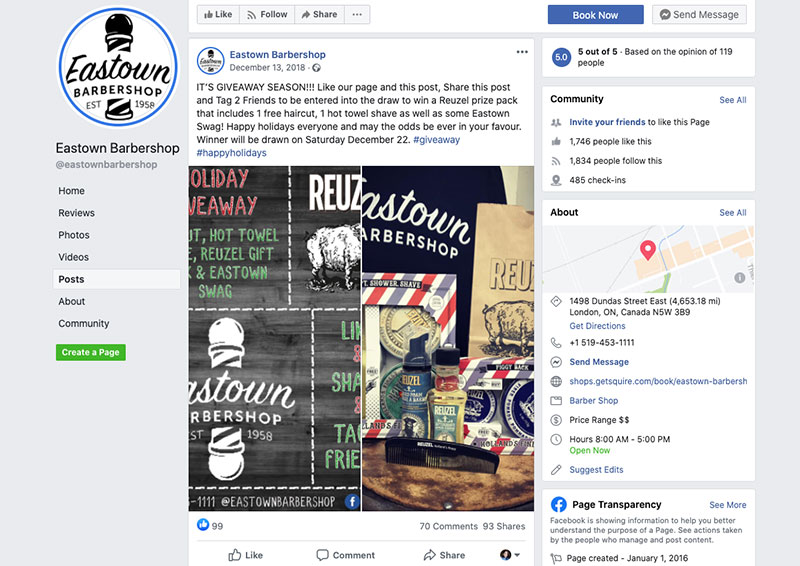
Use social media platforms like Instagram and Facebook to promote your barbershop and engage with your customers. Post regularly and use hashtags to reach a wider audience.
Encourage your customers to tag you in their photos and share their experiences at your barbershop.
Get good reviews on customer review sites
Many potential customers look at review sites such as Yelp before deciding to try a new place. In order to receive a good review, you need to have great customer service. You can also ask your customers to leave a review.
Purchase local ads
Another marketing tool is to purchase ads in a local newspaper, TV station, or radio station. Prices vary for ads depending on the place and the type of ad.
Offer specials and promotions
Offer specials and promotions to attract new customers and incentivize repeat business. For example, you could offer a discount on first-time haircuts, or a loyalty program that rewards customers for frequent visits.
Partner with other businesses
Partner with other local businesses to cross-promote each other’s services. For instance, offer a discount to customers who show their receipt from a neighboring coffee shop or clothing store.
Get referrals
Barbershops can give incentives for their clients to refer more customers to them. Without a doubt, word-of-mouth marketing is one of the most effective methods to get your barbershop out there.
Additional Tips to Start a Barbershop

Opening a barbershop on your own is not an easy feat. You may have great ideas but lack the knowledge on how to put them into practice.
Don’t worry though, that’s perfectly normal. Plenty of now-successful barbershop owners used to stand on that very spot, wondering how to do it. Where to start.
And that’s why some of them decided to share the lessons they learned along the way:
- Get experience in the industry before starting your own business
- Start small. Do not invest too much but rather build as you grow
- Before renting a space research the area to see if it is a good location for a business
- Try to set up the barbershop in a location with lots of foot traffic and ample parking
- Set the hours of operation based on what suits the clientele best
FAQs About Opening a Barbershop
1. What licenses and permits do I need to start a barbershop?
Barbershops typically need a business license, a barber license, and a building permit, though the precise requirements may change based on the locale. You might also need additional licenses, such as a health permit or a permit for signs.
2. How do I choose a location for my barbershop?
A barbershop’s success can be significantly impacted by its location. Aim for high pedestrian traffic, convenient access by car or public transportation, and plenty of parking. It’s also crucial to take into account the neighborhood’s demographics and local competitiveness.
The likelihood of success might be significantly increased in an area with little competition and high demand for grooming services.
3. What do you need to open a barbershop?
It costs a lot of money to start a barbershop in terms of materials and equipment. Barber chairs, clippers, scissors, combs, and styling supplies are considered basic supplies. You’ll also need towels, capes, and cleaning supplies.
In order to provide a great client experience and reduce the need for frequent replacements, it is crucial to invest in high-quality equipment.
4. How can I find and hire skilled barbers for my shop?
Although it can be difficult to the right person for the job, there are a few approaches you could try. Draw in candidates by advertising job openings online, connecting with other barbers, and providing referral bonuses.
To make sure that the candidates have the qualifications and experience to deliver top-notch services, it is crucial to conduct in-depth interviews and check their references.
5. How much does it cost to open a barbershop?
The location, size, and degree of personalization all affect the estimated cost to open a barbershop. The price may generally be found in the $50,000–$150,000 range. Equipment, supplies, rent, and marketing charges are among the major costs.
Before launching the business, it’s critical to develop a thorough budget and get funding.
6. What are some effective marketing strategies for a new barbershop?
Offering specials to brand-new clients, establishing a social media presence, and developing business relationships with the neighborhood are all viable marketing techniques for a new barbershop. It’s crucial to develop a distinctive brand and environment to set the barbershop apart from rivals.
Excellent customer service and a memorable experience can help draw in new clients and keep existing ones. Don’t forget about the battle-proven marketing strategy – word-of-mouth recommendations.
7. How do I create a unique brand and atmosphere for my barbershop?
For a barbershop, developing a distinctive brand and environment can help draw clients. It’s also something that’ll set your barbershop apart from rivals.
Think of creating a unique logo and color scheme, furnishing the area in antique or modern style, and providing distinctive services like beard trimming or scalp treatments.
Customers are more likely to remember an encounter that was comfortable and welcoming, with helpful personnel and attentive service.
8. How do I set prices for my services and products?
It can be difficult to strike a balance between remaining competitive and covering costs when pricing services and goods.
Researching the prices of competitors in the area and considering the level of expertise and experience of the staff can help determine appropriate pricing.
While determining rates, it’s crucial to take into account the cost of the necessary materials, rent, and promotion. Moreover, offering package deals or discounts to loyal clients might aid in bringing in and keeping clients.
9. What types of insurance do I need for my barbershop?
Barbershops should think about obtaining a variety of insurance policies to guard against any liabilities. While professional liability insurance helps defend against allegations of negligence or malpractice, general liability insurance can cover accidents or injuries that take place on the property.
While workers’ compensation insurance can provide coverage for accidents experienced by barbers while on the job, property insurance can cover damage or loss to tools and supplies.
The precise types and quantities of insurance coverage required for the barbershop should be discussed with an insurance agent.
10. How can I create a loyal customer base for my barbershop?
Offering exceptional customer service and individualized experiences will help a barbershop build a loyal clientele. Developing rapport with consumers through cordial communication and keeping track of their preferences can help to establish a pleasant environment that promotes repeat business.
Providing discounts or loyalty programs to loyal clients can help encourage them to come back. Also, having a strong online presence on social media and through online reviews can assist draw in new clients and keep hold of old ones.
Ending Thoughts on How to Start a Barbershop
Opening a new barbershop is an exciting yet nerve-racking prospect. It takes a lot of careful planning and organizing.
For those who are passionate about being a barber, there is no doubt that the venture will be worthwhile.
This guide on how to start a barbershop will help you take the first steps toward making your dream a reality.





